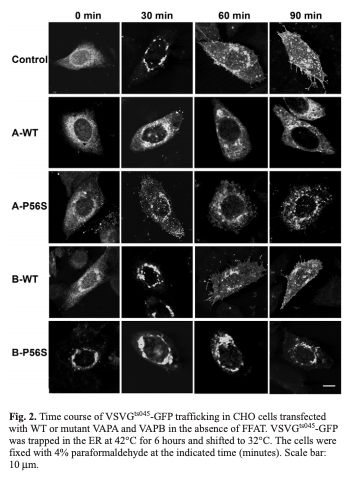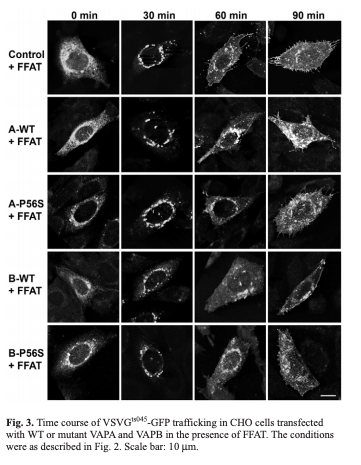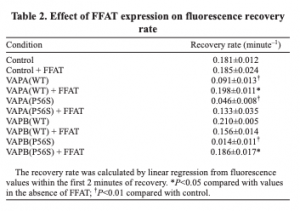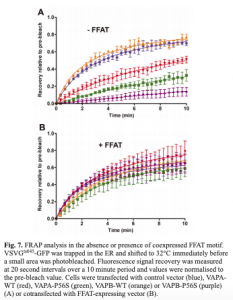Motivation
The motivation behind this experiment was to look for whether or not proteins folded correctly and whether or not those transmembrane proteins diffused from the ER to the Golgi and from there, to the membrane. The different time stamps were taken to allow experimenters to see when the transition would occur. This experiment also allows for checking to see how the FFAT motif's expression helps with diffusion.
Procedure
VSVG is used for this experiment as it is synthesized by the ER and can be tagged for Immunofluorescence. Also it is temperature sensitive meaning it can be stopped from exiting the ER at will with a temperature change.
For the experiment without the FFAT motif:
1. Grow VAP cells at 39°C for 16 hours in paraformaldehyde
2. Increase temperature to 42°C for 6 hours
3. Add fluorescence flags for VSVG
4. Add VSVG flag antibodies
5. Drop cells to 32°C to see transport of proteins
6. Immunofluorescence experiment
7. Image at 0 min, 30 min, 60 min, and 90 min



